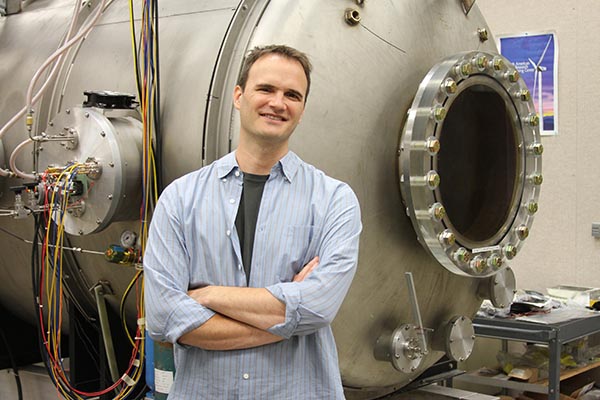UCLA Samueli Newsroom
New shape could make blades lighter, larger and more efficient
Biplanes, the fixed-wing aircrafts with two wings, one above the other, exist today mostly in aviation museums, World War I movies and black-and-white photos. But thanks to an innovation by UCLA engineers, that two-wing design could soon be used to make wind turbines that harvest energy more efficiently.
.jpg)
Today’s giant wind turbines typically use three blades, each of which can be as long as a football field and weigh as much as a Boeing 737. The new UCLA design features blades that are split in two near the rotor but fuse into a single blade about halfway toward each blade’s outer end.
The advantage? The shape increases the structural strength of these behemoth parts, which could allow for blades that are about 45% lighter than conventional monoplane blades of the same length and materials. A study on the design’s effectiveness was published in Renewable Energy.
“In the big picture, this may change the way we design large wind turbines and help make sustainable wind energy an even more attractive and ubiquitous option as we go away from fossil fuels,” said Richard Wirz, a professor of mechanical and aerospace engineering at the UCLA Samueli School of Engineering.
 |
||
| Professor Richard Wirz. | ||
Wirz originated the idea of biplane wind turbine blades when he joined the UCLA faculty in 2008, and he has been working on the idea ever since in his Energy Innovation Lab. The new design was awarded a U.S. patent in 2017.
Wirz and two former UCLA doctoral students, Phillip Chiu and Perry Roth-Johnson, created computer simulations of the design that demonstrated its aero-structural performance advantages over conventional blades. They also built a 3-foot-tall section of the new blade, and tested it in a wind tunnel to confirm the simulation results.
The study also showed that the design could capture slightly more energy than single-blade designs of the same length. The blades of today’s wind turbines are so large – often more than 100 meters long and weighing more than 60 tons – because they need to capture as much wind energy as possible to be effective.
But as turbine blades have gotten larger, so have the costs of manufacturing and transporting them, as well as the cost of building the turbine towers and their foundations.
“The basic idea behind the biplane design is to reduce their mass, and therefore the stresses on the entire turbine structure,” Wirz said. “The concept is similar to why we use ‘I’ beams for the steel frames of larger buildings: It’s an ideal shape to carry heavy loads.”
Lighter blades would also require less material to build, which could lower the manufacturing cost of wind turbines and lower their cost for the companies and public agencies that purchase and deploy them. It could also allow manufacturers to build taller wind turbines that are more efficient at harvesting the better-quality wind energy that’s available higher above ground level.
Advances like the new blade design could make wind energy a cheaper and more significant portion of the renewable energy portfolio all over the world, Wirz said. In 2018, wind accounted for 272 terawatt hours, or less than 7% of the energy generated at utility-scale facilities in the United States, according to the U.S. Energy Information Administration.
“The next step is to manufacture a prototype blade and demonstrate it, which can be done by replacing the blades on an existing turbine,” Wirz said. “With a successful demonstration, blade manufacturers will have the blueprint for developing the next generation of lighter and larger blades.”